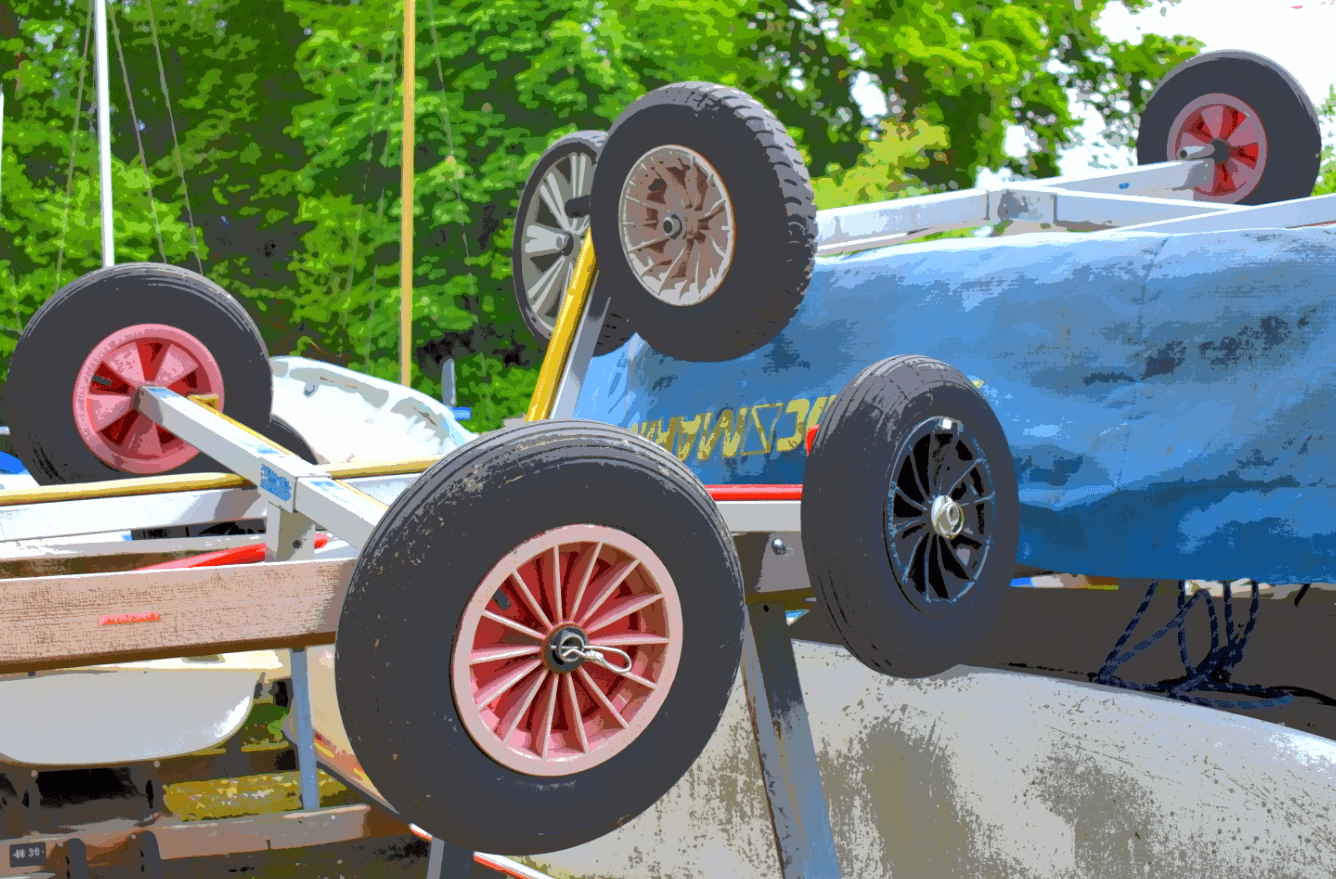A Guide to the Best Methods of Tire Disposal

Greetings fellow travelers!
I base today's post on some months' personal observation but a relatively large sample size. In other words, this is what I see people doing in practice. If you're puzzled by any of the entries, please don't blame me.
The number one method of tire disposal
The default method to dispose an unwanted tire is to carefully place it somewhere it will not be disturbed: rivers are particularly well suited, as are wetlands and any protected environmental areas really. This method also works for bicycle parts up to and including the whole bike, shopping carts, construction debris, and general waste, especially fast-food containers and plastic bags.
Methods for people who live in large cities
One of the more efficient methods developed in recent years, formerly limited to intersections and traffic stops, but now extended to gas stations and shopping areas, and showing rapid growth: the surprise valet service, which you can reliably identify by a polite young man requesting you to step outside your vehicle right now. If a weapon is being brandished, then you are reliably being offered the surprise valet service. This method results in all tires being disposed of simultaneously, albeit with the remainder of your vehicle as well. Pro-tip: keep a small bit of cash and a phone about your person at all times so that you may effect the expeditious removal of your own good self from the scene of disposal.
Methods for professional truck drivers
This method is most commonly used by drivers of large trucks that frequent the interstate highway system: if you even notice that one of your tires has frayed to such an extent that it loses grip with its spinning wheel, by all means keep driving. You have a deadline and, after all, many other tires that are still perfectly attached. Plus, it is a known fact that highway fatigue is one of the most dangerous conditions for non-professional drivers, i.e. all the sheeples in their little cars and SUVs. Your occasional high-speed cast-aways provide them with necessary stimulus and excitement, testing drivers' reaction speeds and swerving skills.
When your vehicle has seen better days
A tire in need of disposal has a history. Tires with the most colorful history may often be found on those cars with the most colorful appearance. If your car has seen better days (and those better days have seen better days), your most practical approach is also simplicity itself: abandon your vehicle on the road's shoulder. This method has the advantage of being quite versatile. It may be applied in the event of (i) any mechanical problem up to and including engine fire, (ii) the inexplicable absence of propulsive material (also known as running out of gas), and even (iii) driver impairment, with alcohol and marijuana use being most popular associated causes. Practice note: this method is most common in Southern states and warmer climates. In cold states, consider (a) the potential impact of snowplows on your vehicle, to say nothing of its tires, and (b) the potential impact on your health of abandoning your vehicle in subzero temperatures.
If you are a polite suburbanite
Many of the methods available to the others described here are unavailable or inconvenient for the suburbanite. Fortunately, another time-tested method is available to you: stack all unwanted tires in the corner of your garage. A covering such as an old sheet is an optional but classy look, although it will prevent none of dust, mold, and vermin from finding their way in. You may repeat this method without limit, until you find yourself parking in your neighbor's driveway or you have moved house. And if you are planning to move house, we recommend you consider temporarily adopting the next method to make your garage once again contain two cars as it did when you bought the place.
If you are an individual assured of your Constitutional rights
You know your rights, and these include the absolute right to do what you wish on your own G--damned property. And as every fool knows, the house is just part of your eminent domain. Your fiefdom extends to the cracked sidewalk at the front of your lot, down alongside the fence festively topped with concertina wire, to the back lot where your dog has yet to pull free from the chain keeping him tied to his guard duties. Your method of tire disposal is the same as for every other broken large appliance, vehicle awaiting restoration, collection of 50-gallon drums, and assorted military surplus purchases: find a clear spot on your lawn and throw them on.
Method for people living paycheck to paycheck
"Why would I ever replace a tire?" Indeed.
For persons using a local garage
Although the above methods should prove sufficient to all your needs, if you nonetheless should feel compelled to enlist the assistance of a garage in disposing of your unwanted tires, you must choose your partner carefully. The best garages can be identified by their proximity to copious areas for appropriate tire storage: rivers are particularly well suited, as are wetlands and any protected environmental areas really.
Be well.






Member discussion